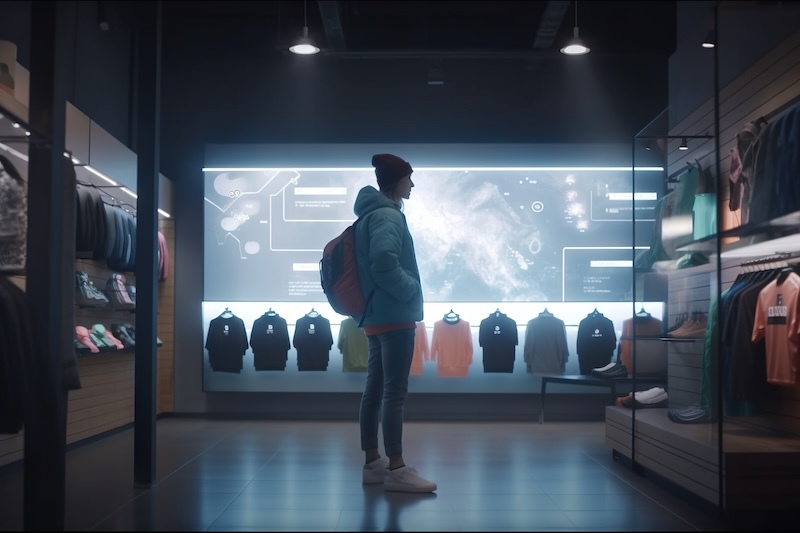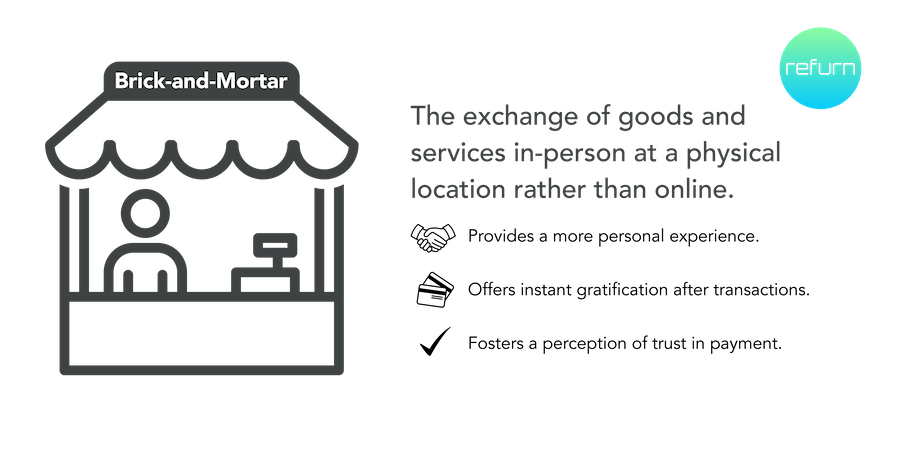Understanding Return Rates for Brick-and-Mortar Stores

Brick-and-mortar businesses have found it difficult to compete with online businesses, because the latter usually have lower operating costs and greater flexibility. So, how can traditional retailers improve on return rates and better compete with online-only firms?
Brick-and-mortar stores have an average return rate of 10.2% compared to the average 17.6 of online stores. This is primarily due to the challenges of not being able to see the item a customer wants to purchase, which can typically lead unexpected returns.
The issue for brick-and-mortar retailers, however, is that these e-commerce businesses, despite having larger return rates, greatly outnumber their in-person competitors due to the ability to reach a wider audience as e-commerce continues to boom nationwide.

Both e-commerce and brick-and-mortar stores still process a significant amount of returns daily, which is a time-consuming process that can be a burden. With both sides seeing their own unique set of issues, how can retailers improve on return rates while also continuing to reach a mass audience?
The retail industry as a whole spend less time and resources with this painstaking process and more on the bottom by partnering with a professional platform like REFURN, which tailors to meet the needs of all retailers, including those small businesses that are looking to grow and expand with a better online presence.
Brick-and-Mortar Retail
Brick-and-mortar retail refers to any in-person exchange of goods or services, in this case for monetary profit. More commonly known as “stores,” brick-and-mortar was the staple of the industry prior to the internet.
Types Of Brick-and-Mortar Stores
Retail is categorized and dominated by niche markets. Here’s a quick rundown of common types.
- Convenience: Whether you call it a corner store, a Bodega, or the gas station, convenience stores are in just about every city and town in the country and are designed for people on the go.
- Grocery: Grocery stores and supermarkets are a key part of running any household, where most of your produce, meat and other goods come from.
- Specialty: These stores specialize in something you can’t get anywhere else, like a repair shop, and even those can be categorized by the item. These are typically associated with services, but can be for goods as well.
- Department: Department stores are typically more commercial, like a mall. This is where you’ll find mass quantities and varieties of stuff like clothing, home materials and more.
What Brick-And-Mortar Stores Are Most Profitable?
When most people think of who dominates brick-and-mortar retail, a common answer will often be Walmart. Groceries and supermarkets dominate this sector primarily due to convenience and demand.
Close behind are home improvement stores like Home Depot and Lowes, along with pharmacies like Walgreens and CVS. Brick-and-mortar continues to be a big factor in retail primarily to these stores, which continue to be a main source for customers.
Some speciality stores, such as a mattress company, often need physical locations in order to deliver items to a customer, process returns, manage inventory and more, which takes up time and resources.
Brick-And-Mortar: Advantages And Disadvantages
While brick-and-mortar retail stores are great for grocery shopping, picking up your prescription and more, there is a reason for a rise in e-commerce over the last few decades.
Pros of Brick-and-Mortar Stores
Physical stores offer the advantage of an in-person shopping experience, that allows products to be inspected by the shopper. This leads to lower return rates, due to a consumer making more informed purchasing decisions than online. Brick-and-mortar stores excel in managing a lower return rate, primarily due to trust.
Plus, there is the notion that it is more risky to provide their credit card or financial information online. You may typically see this with the older population, but it still plays a factor.
Plus, there is the notion that some people don’t want to put their credit card or financial information online. You may typically see this with the older population, but it still plays a factor.
In more recent times, in-person retailers often can reach as many people as e-commerce industries, too, as smaller businesses are now left to scramble to establish an online presence.
Cons of Brick-and-Mortar Stores
Well, convenience certainly takes a hit in the brick-and-mortar world, as it’s much easier to order groceries delivered to your home through InstaCart, or order packages through Amazon.
Selling online can also be cheaper, as physical stores are expensive to open and operate. A few examples of what you would expect to pay for at a retail store in a metro area include:
- Rent
- Salaries
- Benefits
- Computers
- POS Systems
- Utility Bills
- Display Racks
- Vendor Agreements
- Security Equipment
- Licenses and Permits
- Renovations and Design
- Marketing and Advertising
- Store Fixtures and Equipment
- Several Types of Business Licenses
Some of these costs, such as those related to your website, will also apply to running an online shop. Overall, however, the operating costs for running an online store are significantly lower than those of a brick-and-mortar location.
Adaptions For Brick-And-Mortar Stores
While the advantages are clear, brick-and-mortar stores face challenges that require some adaptability to create more efficient processes to generate revenue in today’s online world.
Strategies To Maximize Income For Brick-And-Mortar Stores
Adapting your business model to be fully operational both online and in-person is a great way for in-person retailers to capitalize on the benefits that e-commerce has to offer. Plus, you can boost brick-and-mortar retail conversion rates, as a hybrid model gives you more opportunities to make a sale.
Creating a hybrid online presence is a way to reap the benefits of both brick-and-morder and the online business model. For example, some brick-and-mortar grocery stores, such as Publix, allow customers to shop for groceries online and have them delivered to their doorstep in as little as a few hours. The increasing prevalence of these hybrid business models has spawned offshoot terms such as “click and mortars” and “bricks and clicks.”
Plus, an online model allows retailers to increase service offerings, create better solutions for return management to save on costs as well as being able to offer consumers the full suite of services for their purchase including old item removal, new item assembly and free return to store.
REFURN: Your Solution To Managing Returns
REFURN is the transformative solution your business can use to address the complexities of managing product returns and exchanges by offering an easy, but also eco-friendly solution.
The process is simple. REFURN helps businesses facilitate returns to stores or vendors, enabling return and donation/recycling options, managing product destruction and recall extractions all to help the E-commerce business grow significantly with an all-in-one returns management solution.
Here’s a quick snapshot of all REFURN can do.
- Return items to the store.
- Process returns to the customer with disposal, or recycling.
- Streamline your returns management with a reliable partner.
Since we provide environmentally friendly disposal options, your company can align itself with our eco-friendly goals, like donating inventory and recycling online product returns to prevent environmental harm instead of resorting to destruction.
Are Traditional Retailers Going Out Of Style?
Although many brick-and-mortars are closing stores nationwide, the advantages of traditional retail brick-and-mortar model is still important given that several large online e-commerce companies opened physical locations.
In 2023, Amazon.com Inc. has opened brick-and-mortar stores to help market its products and strengthen customer relations. So while e-commerce sales soar, the industry understands the importance of face-to-face consumer and customer relations.
The Bottom Line: Your Brick-and-Mortar Can Still be Successful
In-person retail isn’t going away, and creating a hybrid business model opens up a wide range of opportunities for an e-commerce business to grow.
Also, REFURN can serve as the catalyst for quickly managing inventory returns and disposing of items to keep your business running smoothly.

